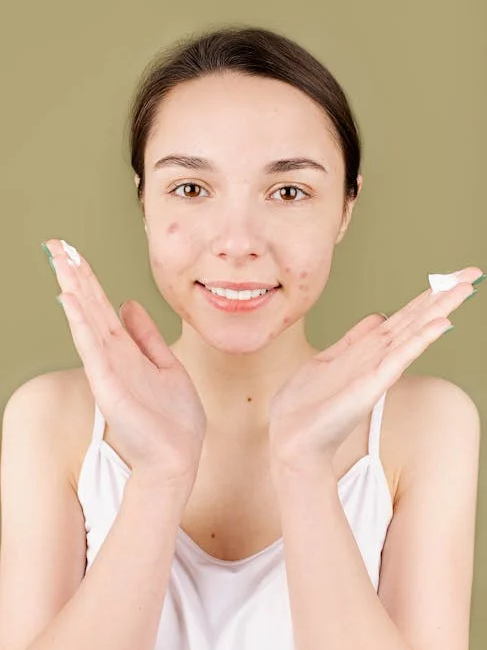Pitted acne scars are very common after getting pimples (also known as acne). This is especially common if the pimple outbreak is serious or if the pimples are big.
It is important to know the differences between flat acne marks and pitted acne scars because the treatments are different.
Treating scars and acne marks is as much a science as it is an art. It requires accurate diagnosis followed by precise treatment to deliver optimal improvements and results.
What are Pitted Acne Scars?
Pitted acne scars are scars that are atrophic scars. They look like depressions or “holes” in your skin. There are 3 types of pitted scars: ice pick scars, boxcar scars and rolling scars.
Before treating pitted acne scars, you need to consult to understand the exact type of acne scarring you have.
How Do Pitted Scars Form?
The body’s natural repair system kicks in when your skin experiences severe damage, such as from deep acne or an injury. Here’s a simple visual breakdown:
- Collagen destruction. The skin’s middle layer contains collagen, a naturally occurring protein that provides structure and strength to our connective tissues. Any inflammation and subsequent injury destroy the skin’s collagen, often resulting in pitted scars.
- The repair process begins. Your body sends signals to produce new collagen. However, in severe cases of acne, the regeneration is imperfect, and collagen formation is disrupted.
- Improper healing. Instead of forming collagen evenly, the skin repair process can be patchy. This uneven deposition leaves depressions or indentations in the skin, forming pitted scars.
- Pitted scar formation. Imagine a smooth wall that, after some damage, gets patched up with uneven plaster – some spots are even, while others are lower than others. That’s what happens with your skin.
What Causes Pitted Scars?
Pitted scars are often the result of significant skin damage from:
- Severe acne. Deep cystic or nodular acne can destroy collagen in the skin.
- Skin infections. Diseases like chickenpox or boils can lead to inflammatory damage.
- Improperly healed injuries or surgery. When wounds don’t heal correctly, the collagen repair may be incomplete, leaving visible indentations.
Who Is More Prone to Pitted Scars?
Certain factors can increase the risk of developing pitted scars. Here are some key risk factors:
- People with a history of severe acne. Individuals with deep cystic acne are more likely to develop acne scars due to the intense inflammation that disrupts the skin’s healing process.
- Previous skin infections. Infections like chickenpox or boils can also damage the collagen, leading to irregular skin texture.
- Poor healing response. Some people naturally have poor healing responses, making them more susceptible to scarring.
- Genetic predisposition. If your family history includes problematic scarring, your skin may be more prone to developing pitted scars.
- Improper post-treatment care. Even treatments intended to improve skin, such as laser treatments, can sometimes lead to uneven skin texture if not carefully managed.
How Are Pitted Scars Diagnosed?
Pitted scars are typically diagnosed through a two-pronged approach that combines a visual assessment with advanced technological methods. Here’s an overview:
- Visual examination. Your practitioner begins by carefully inspecting the scarred area. They evaluate the scars’ depth, shape and overall appearance under good lighting, often using magnification or high-resolution photography. This close-up view helps them understand the extent of collagen loss and irregular skin texture, guiding initial impressions of scar severity.
- Using technology.
Doctors and aesthetic practitioners often employ advanced imaging techniques to gain a deeper insight into the underlying skin structure. For instance, they can use:- 3D imaging. This creates a detailed map of the skin surface, allowing clinicians to accurately measure the indentations’ depth.
- High-frequency ultrasound and dermoscopy. These tools provide a closer look at the skin layers, revealing the extent of damage beneath the surface and the state of collagen repair. These technological methods not only confirm what is observed visually but also help in planning effective treatments by quantifying the scar’s severity.
This comprehensive approach ensures that the diagnosis is both accurate and tailored to the individual’s skin healing process.
Types of Pitted Scars
Pitted scars alter the skin’s overall appearance. Often resulting from severe acne or injuries, these scars can vary widely in how they look and feel. Regular skin care routines may help support the healing process, even though scars sometimes persist. Here are the three main types:
Ice Pick Scars
Ice pick scars are deep scars with narrow widths.

Boxcar Scars
Boxcar scars are deep scars with “punched out” and squarish edges.
Rolling Scars
Rolling scars are shallow scars that have sloping edges.

Do Pitted Scars go away over time?
Unfortunately, pitted scars do not go away over time. Atrophic acne scars slowly worsen over years and decades due to ageing-related collagen loss in your skin.
How To Treat Pitted Scars?
To treat scars effectively, it is also important to identify the types of acne scars first, followed by instituting the appropriate treatment for the type of scar.
For example, box-car scars will require subcision and filler followed by fractional lase,r whereas icepick scars can be treated slightly differently with TCA chemical peel and fractional lasers.
Everyone is unique. The most suitable treatments for your scar and skin will differ amongst individuals depending on your skin type, hydration, pain tolerance and ability to handle downtime.
Scar treatments should also be flexible to accommodate how your skin changes during treatment.
• Chemical Peels
Chemical peels can treat acne scars. For mild pitted acne scarring, chemical peels can help reduce acne inflammation (increased white blood cells), help fight acne, and treat mild depressed scars. Examples include azelaic acid, salicylic acid, glycolic acid and exfoliating hydroxy acids.
More aggressive chemical peels like TCA cross can be used for ice-pick scars.
• Lasers
Fractional laser resurfacing helps to resurface your skin for deep pitted scars remodelling. After fractional laser resurfacing for treating acne scars, your skin heals with new skin cells and more even-toned skin underneath. This treatment also helps to rejuvenate surrounding skin around the pitted scarring and scarred tissue.
Fractional laser can be combined with other treatments like Infini and Subcision to achieve better scarring improvement results. This is why it is important to see a doctor with a wide range of treatment options.
Topical anaesthesia is used before the treatment to reduce discomfort. Strict aftercare of sun avoidance by wearing sunscreen is recommended to minimise post-inflammatory hyperpigmentation.
• INFINI
Fractional microneedling radiofrequency treatments like INFINI can help the healing process by reducing inflammation and blood flow to improve redness.
This treatment also stimulates collagen production in the deep dermis layer over several treatments to achieve smooth skin.
• Subcision
Subcision works best for tethered scars, stubborn scar tissue and deep pitted scars.
Subcision is performed using a needle to gently free up the scar tissue under the skin. It is a laborious process but the results obtained are often unparalleled. Not many doctors in Singapore offer this treatment.
Subcision works best with dermal fillers to support scar recovery and remodelling.
• Dermal Fillers
Dermal fillers are often used together with subcision of acne scars to enhance scar remodelling and recovery.
There are several type of fillers for deeper scars, ranging from hyaluronic acid fillers to collagen stimulators like Polynucleotide, Injectable Moisturiser and Ellanse. Each has its own strengths and weaknesses.
Collagen stimulators in particular can stimulate new skin collagen production and elastin production by helping your body to produce new collagen fibers. While your scarring may not disappear completely, the deep indentations will look shallower and less obvious
This is a highly technical treatment for pitted acne scar and also one of the most effective treatments that requires dexterity and experience.
Apart from effectiveness of the treatment for deep pitted acne scars, the other key considerations that you should have include: recovery time/ wound healing, risk and price.
Other treatments that used to be popular amongst board certified dermatologist include punch excision. However, it has risks of new scar, takes quite a while to heal, post-inflammatory hyperpigmentation and risk of hypertrophic scars/ keloid scars.
If in doubt, please speak to a scar expert or board certified dermatologist for advice as there’s no “one size fits all” treatment options in cosmetic dermatology.
How to Prevent Pitted Scars?
The best way to prevent deep pitted acne scars is to prevent active acne lesions from forming. This can be done using good skin care, early acne treatments and avoid squeezing the pimples that form. However, do note that genetics also play a role in determining how easily you scar after active acne.
Apart from early acne treatment, knowing the difference between active acne and
acne scars is also important. Remember to treat acne immediately so that less scars form. This is especially important for patients who have dark skin (darker skin types).
Let us help you to achieve blemish-free skin!
Conclusion
Pitted acne scars form when deep skin damage disrupts collagen production, leaving behind uneven depressions that don’t fade. Although these scars are permanent, treatments such as chemical peels, laser resurfacing, subcision, and dermal fillers can significantly improve their appearance.
A personalised approach guided by an aesthetic practitioner and a consistent skincare routine is essential to treat existing scars and prevent new ones. Early intervention is key to managing acne effectively and minimising the risk of lasting scarring.






